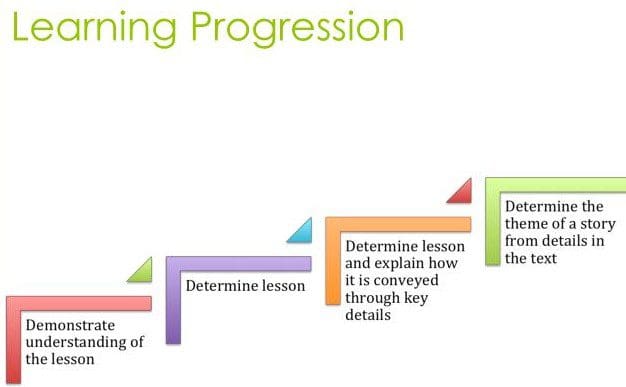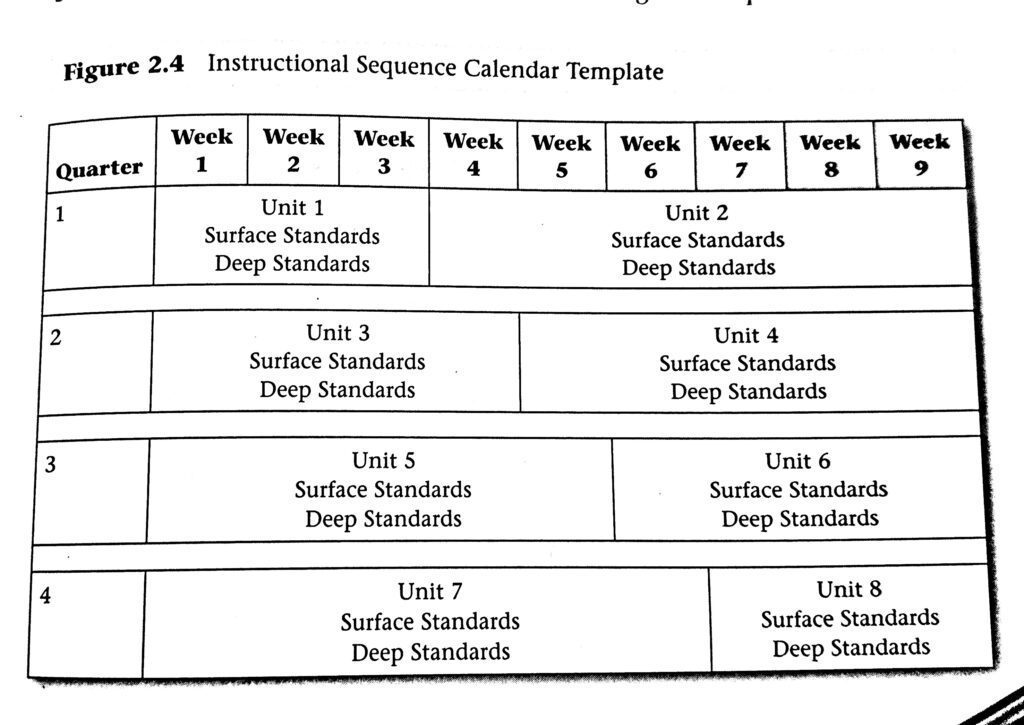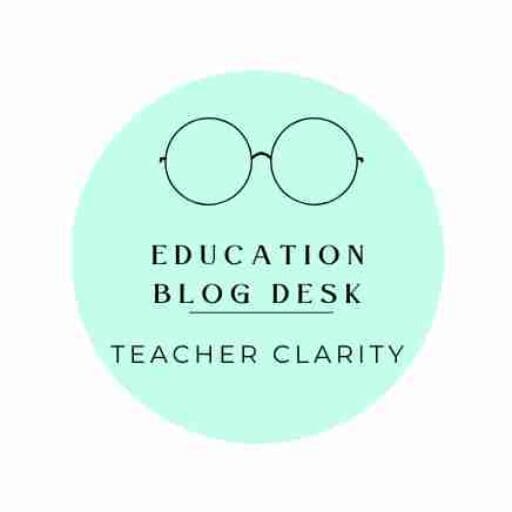
Learning Progressions: A Pathway for the 21st Century Teaching and Learning
Clarify Learning Progression
Clarify learning progression within standards is a critical first step for teachers and students to share ownership of learning with students, according to Mary Jane O’Connell and Kara Vandas, authors of the Partnering with Students Building Ownership of Learning book.
O’Connell and Vandas suggest following these two steps to answer the critical question: how do teachers find clarity in a sea of standards?
Step 1: Identify the learning progressions within the standards
Step 2: Develop an instructional sequence
Why Clarifying Learning Progression Important
Often teachers face covering so many standards, with so little time to cover the standards in depth. Some curricular resources are well aligned to the standards, and others are not. I know this so well, and it can be frustrating. Educators know that time with students is valuable, and without clear direction to define the learning journey. The bottom line is, as O’Connell and Vandas point out, that “teachers are in need of a more thoughtful approach to clearly define learning for students.”
Another issue is finding clarity within the standards to determine priorities that focus learning. Authors emphasize that “we are faced with the same conundrum and must reach an agreement on what is most important to teach, and ultimately for students to learn.”
How to find clarity in a sea of standards
Step 1: Identify Learning Progressions within Standards
One way teachers have a deep understanding of the standards is to identify which standards make sense for introductory learning and which represent deep learning. One way is to visualize this hierarchy or progression within the standards as a scaffold used to erect a building.
O’Connell and Vandas refer to this scaffold used by John Hattie’s Visible Learning for Teachers as moving from surface to deep learning.
O’Connell and Vandas review an example from Common Core State Standards. Authors take a portion of the standards. and determine the learning progression within them by using a series of questions to analyze the standards. This way teachers can review a strand, or one logical grouping of standards at a time, and eventually work through all the standards.
According to authors, standards are listed under like topics, with little respect to hierarchy of thinking or rigor. The teacher must determine the hierarchy, which can be accomplished by reviewing one section of the standards at a time and asking the following questions:
- Which standard(s) in this section represent the deepest learning?
- Which standard(s) represent the surface or introductory learning?
- If I ordered the standards, which would I teach first, and what would be the logical order?
To accomplish this task, O’Connell and Vandas emphasize that teachers must use a tool, such as a taxonomy, to determine whether a standard falls under surface or deep learning. Author use Webb’s Depth of Knowledge, or DOK.
Example of identifying learning progression within the standards (DOK):
| Standard RL.6 | Recall | Skills and Concepts | Strategic Thinking and Resoning | Extended Thinking |
| RL.6.1 | Cite text evidence to support analysis of what the text says explicitly. | Support inferences made from text | ||
| RL.6.2 | Determine the theme or central idea of a text. Provide a summary of the text distinct from personal opinions or judgments. | Determine how it is conveyed through particular details | ||
| RL.6.3 | Describe how a particular story’s or drama’s plot unfolds in a series of episodes. | Describe how the characters respond or change as the plot moves toward resolution. | ||
| RL.6.4 | Determine the meaning of words and phrases as they are used in a text. | Include figurative and connotative meanings | Analyze the impact of a specific word choice on the meaning and tone. | |
| RL.6.5 | Analyze how a particular sentence, chapter, scene, or stanza fits into the structure of a text and contributes to the development of the theme, setting, or plot. | |||
| RL.6.6 | Explain how an author develops the point of view of the narrator or speaker in a text. | |||
| RL.6.7 | Compare and contrast the experience of reading a story, drams or poem to listening to or viewing an audio, video, or live version of the text. | Contrast what they “see” and “hear” when reading the text to what they perceive when they listen or watch | ||
| RL.6.9 | Compare and contrast texts in different forms or genres in terms of their approaches to similar themes and topics. |
Authors caution readers that using charts of verbs alone can be useful, but also misleading. O’Connell and Vandas give an example of the verb describe can be used to signal both simple and complex concepts. When you compare the following two standards as an example of this issue:
Describe an important event in the story versus Describe how two or more texts relate to one another
The same verb, describe, when paired with the concept, can have a different level of rigor. O’Connell and Vandas emphasize to look closely at the behaviors and cognitive complexity of how students demonstrate the concept within a standard to ensure accurate rigor is assigned.
Put into Practice
When identifying the Learning Progressions within the Standards, you can follow these steps:
- Using a set of standards meaningful to you, select one section or strand of the standards.
- In each standard, identify the verbs and the corresponding nouns and noun phrases.
- Place each standard where it aligns best on the chart, based on the level of rigor.
- If needed, break standards apart to best fit each portion of the standard into the most appropriate level of rigor using DOK. For example. RL.6.4 is one standard with three parts spanning from recall to strategic reasoning.
Develop an Instructional Sequence
Instructional sequence can be drafted after the teacher has established the progression of learning to clarify surface and deep learning standards. Instructional sequence can be drafted to plan how standards should be assessed and taught throughout the school year. Here are the steps in creating an Instructional sequence:
- Use the following questions to decipher the order of surface to deep standards you will teach throughout the school year and within the unit of study:
Does this deep learning standard make sense to teach and assess before or after other deep learning standards for the year? Does this deep learning standard require multiple exposure of teaching and ongoing assessment throughout the year? If so, when? How long should I plan to teach and assess this standard and its supporting surface level standard? - Develop an Instructional Sequence Calendar

In What You Need to Know Standards Based Planning post, I will show you how to plan a unit lesson.
